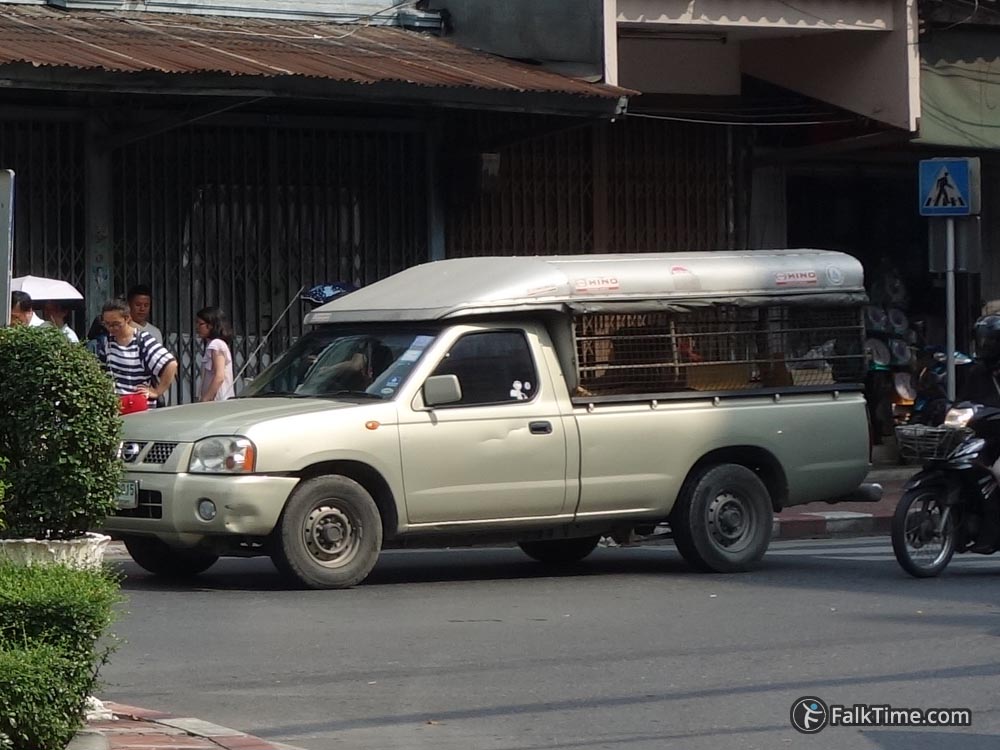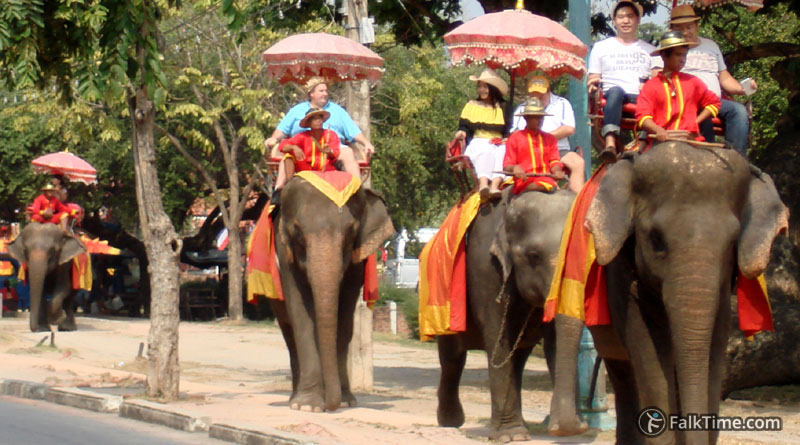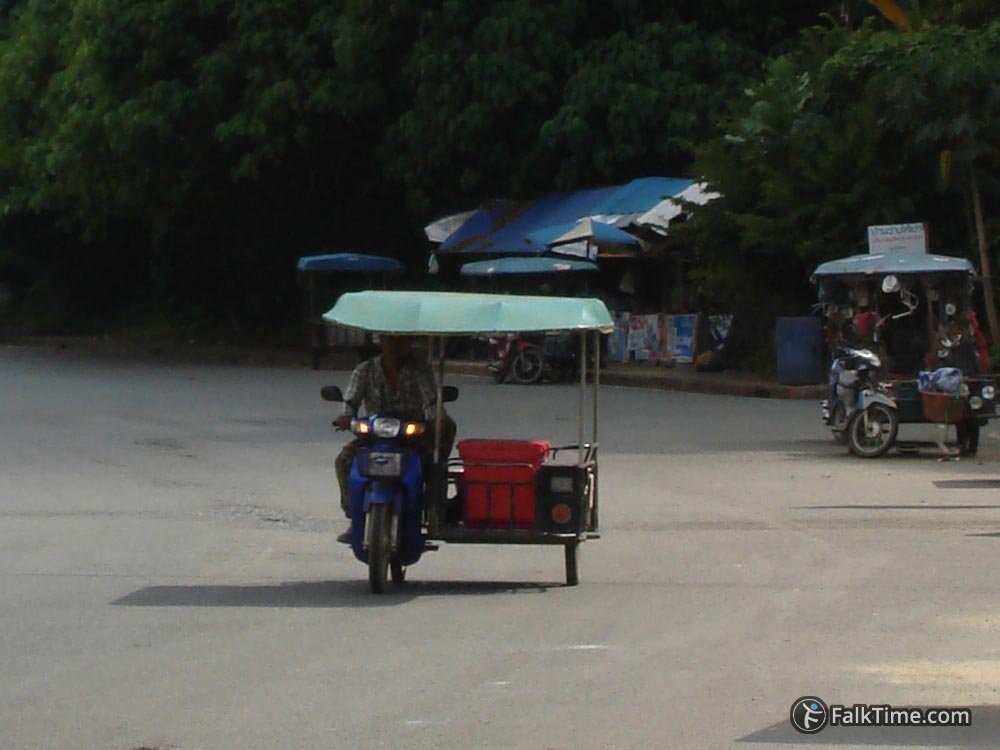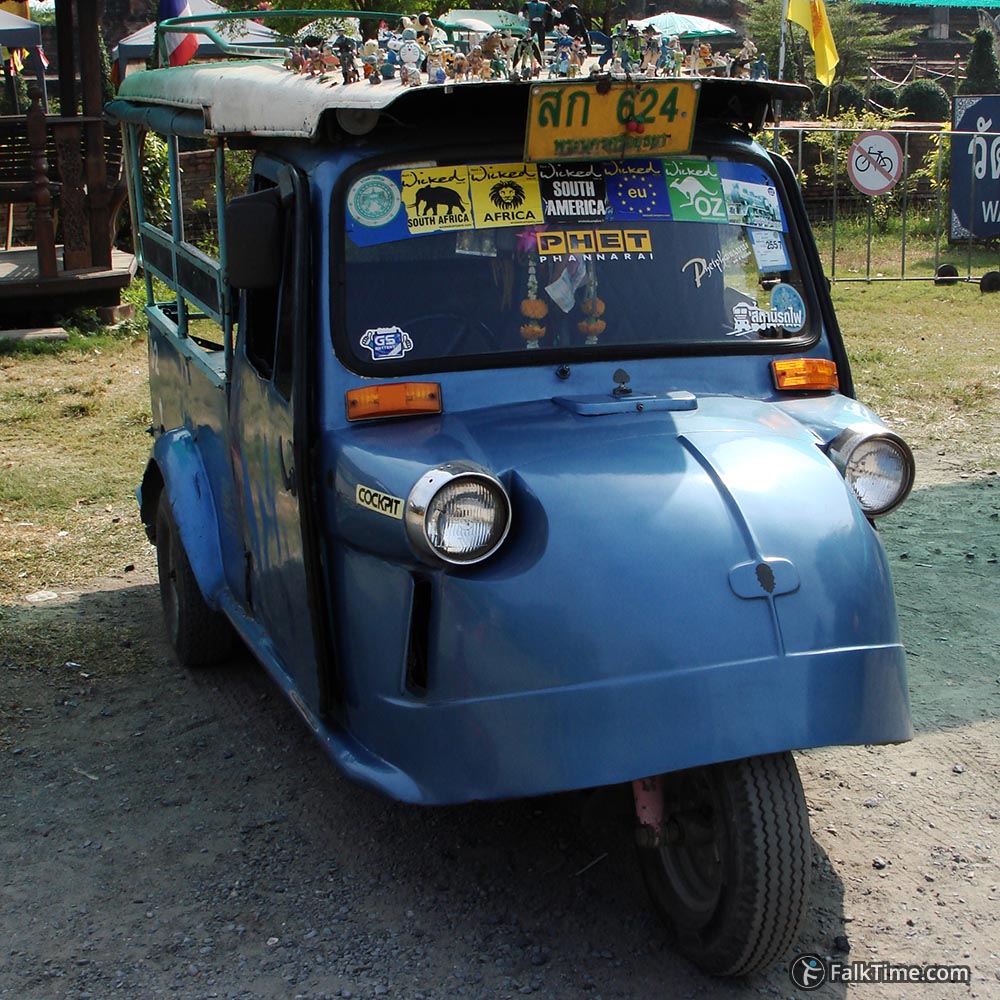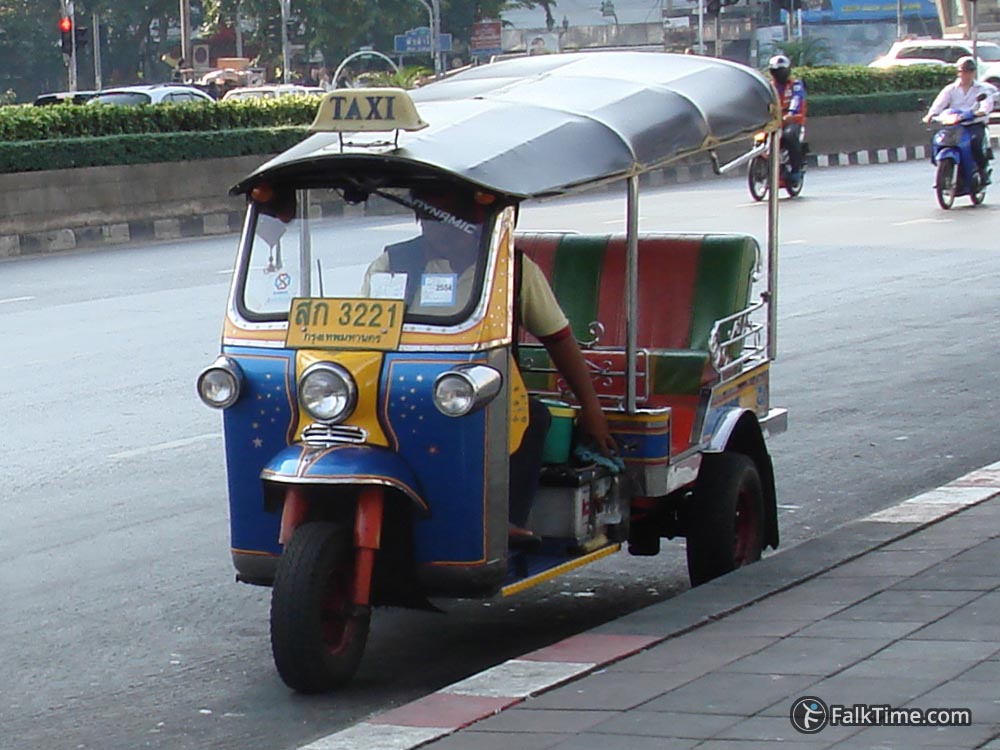Intra-urban transport in Thailand
In this chapter I will tell you about most common means of intra-urban transport in Thailand. So don’t expect to find here information about unique transport (like subway in Bangkok), such information you will find in “Infrastructure” section of city/province you are interested in. Article about intercity transport in Thailand is here.
Contents
- Songthaew (baht bus)
- Motorcycle taxi
- Tuk-tuk
- Velo-taxi (samlor)
- Taxi
- Bus
- Water transport
- Private transport
Songthaew (baht bus)
Songthaews (or baht buses) are common in many areas of Thailand except Bangkok. It is a truck with 2 benches in its back, that’s why it is named “song” (=2) “thaew” (=row). Songthaews stop just about anywhere. There are several ways how Thai baht bus functions:
1. Intra-urban “bus” (in Pattaya they are blue) that has a route, but sometimes it’s hard to guess, which one of routes songthaew will follow today.
2. Intercity “bus” (in Pattaya they are white-coloured).
3. Taxi. If there are already some people in songthaew, the driver will reject your proposal. In any other cases you can easily hire songthaew for any route, just discuss the price.
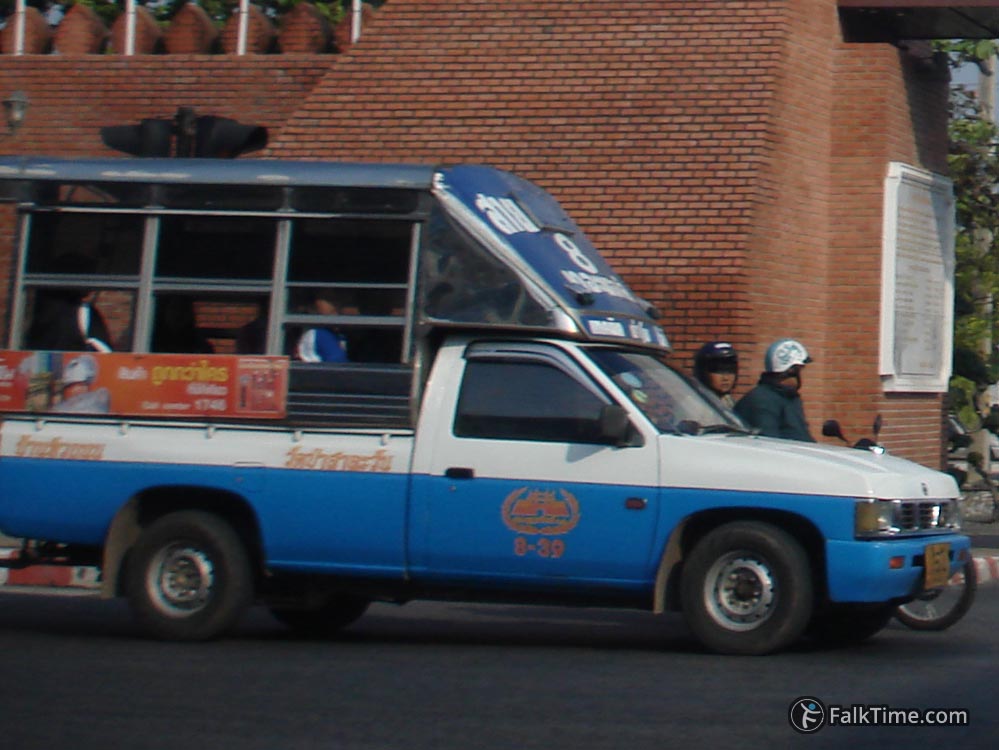
How to use songthaew
– Wave your hand palm downwards to stop songthaew.
– As songthaew has stopped, climb in the back.
– While riding, you’d rather prepare small money (at least 100 THB banknote).
– To ask for a stop press one of buzzers. Spot buzzers in advance, usually they are located on the roof or close to it. If you press a buzzer and there’s no sound, probably it’s just quiet. But if driver doesn’t reduce speed, it can be broken, so press another one. In a seldom case when all buzzers appear to be out of order, you may knock on cabin or ask the closest to cabin passenger to do it.
– When songthaew has stopped, approach cabin (from sidewalk side) and pay money to driver or to person that sits next to him.
Further details of using songthaew
If you have stopped songthaew without passengers and you ask a driver about the route, he may suppose that you want to hire songthaew as a taxi. So if you have no intentions to do it, you’d rather confirm the price after asking about route. Or just don’t try to ask and simply climb in the back of baht bus like I prefer to do. At least you can ask Thai passengers about the route.
As a result (especially in Pattaya) there are songthaews that don’t want to serve as public transport. They would like to be hired by foreigners. If you flag down such songthaew and go direction its back (how can one understand if it is on route or no?) – it will immediately slip away. Don’t let it make you upset – it happens.
If there’s no place to seat in songthaew, you can take a ride standing on a footstep in the end of baht bus at your risk. There’s no possibility to stand inside of songthaew due to low roof. Also you may refuse to take a ride in this case – just wave your hand to driver to show that you won’t go. It’s ok.
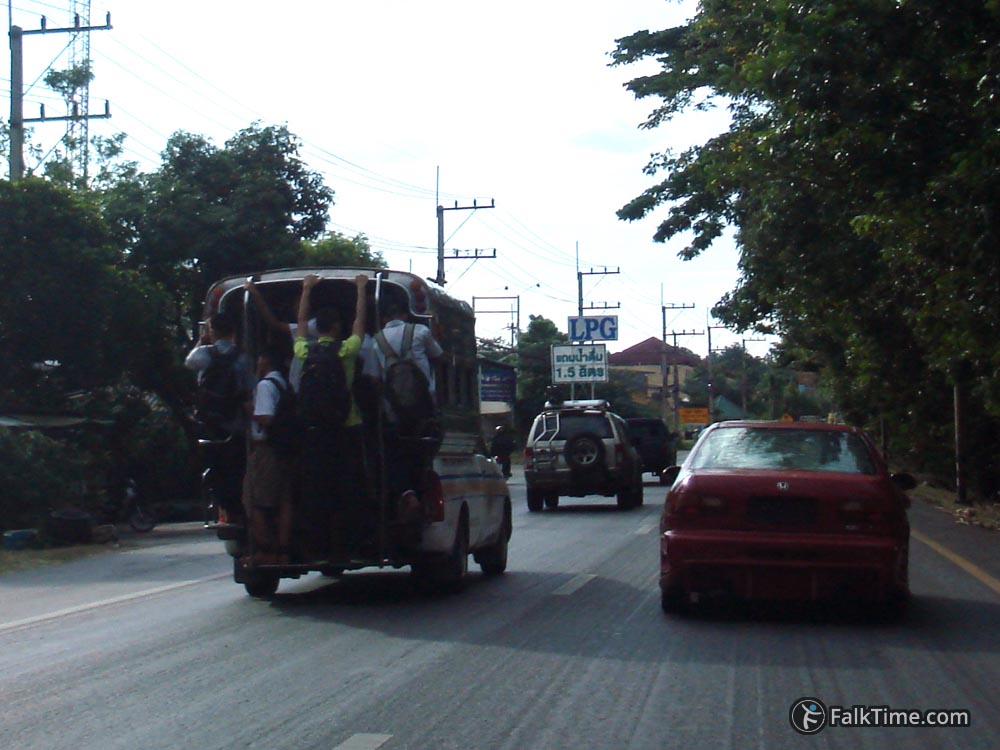
It is convenient & cheap to hire a songthaew, when you’re travelling in a group, ‘cause at least 10 adult passengers fit 2 benches. Especially if your hotel is far from public transport (like some beach hotels next to Pratamnak hill in Pattaya).
If you have waved but songthaew didn’t stop, there are at least 3 reasons:
- Songthaew is full
- Baht bus was hired as a taxi
- Empty songthaew indicates that driver has finished his work and is on the way back home or whatever.
The biggest disadvantage of songthaew is that you may become wet, when it rains or when it is Songkran (Thai New Year). Once, during Songkran, the songthaew I was in stuck in a traffic jam in Rayong – foreigners are not much common there. I arrived to guesthouse with the face painted white and so wet that every step I took, water was leaking out of my sneakers. 100% of cultural immersion.
Motorcycle taxis
I would divide Thai motorcycle taxis in 2 kinds:
a) Motorcycles or scooters (motosai)
Represent the quickest way to move: in traffic jams they crawl between cars, use sidewalks etc. The most desperate motorcyclists work in Bangkok. If I have a choice, I try to avoid using motorcycles. But sometimes it is the only mean of transport that somehow moves while other means are stuck.
After 1 ride I received a label “crazy Russian” from my Filipino friend, just for my choice of taxi. The entire ride he was screaming in my ear that he didn’t want to die. But what could have I chosen, if it was the only way to solve the problem of transportation effectively? So if you trust the skill of unknown driver – go for it, if you doubt – then it’s better to avoid.
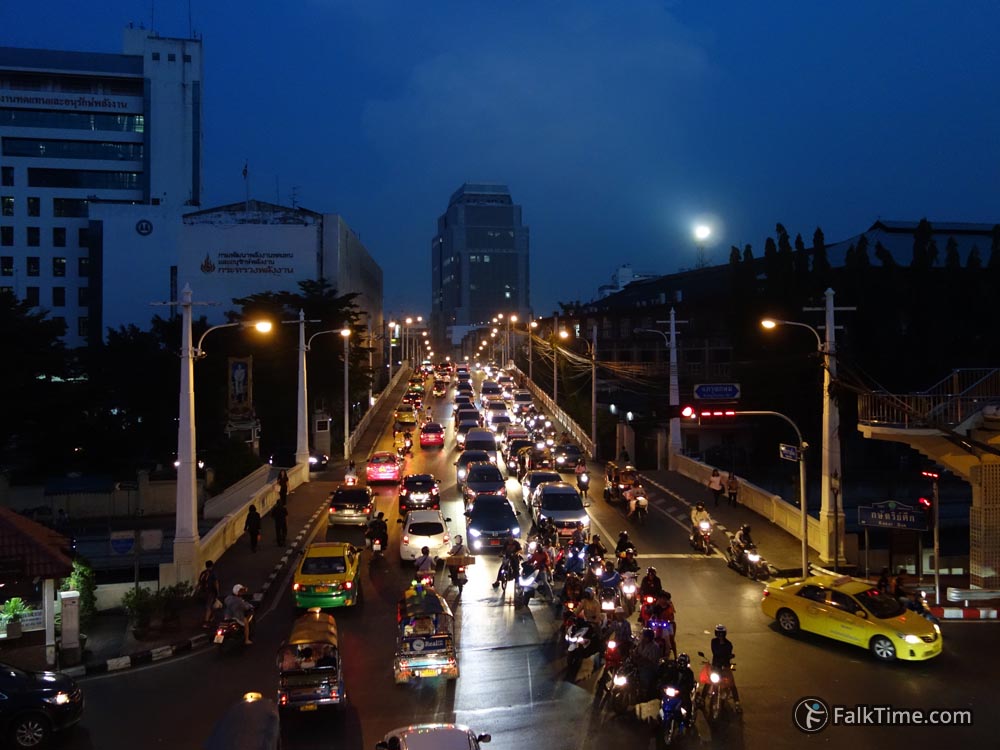
According to rules motorcycle drivers should provide you with a helmet and take not more than one passenger. In fact there’s a lack of helmets and they take even 2 non-slim adults on “board”. Motorcycle taxi drivers wear vests that differ them from other motorcyclists.
I’ve seen motorcycle taxi price list (that seemed to be official) on the web. But I have never seen it live. Usually you just tell the driver your destination and he gives you the price. You are free to haggle. Generally they give a reasonable price (even in Pattaya or Bangkok), but some say that in touristic places drivers give a higher price. The price can be compared to the price of taxi (see below).
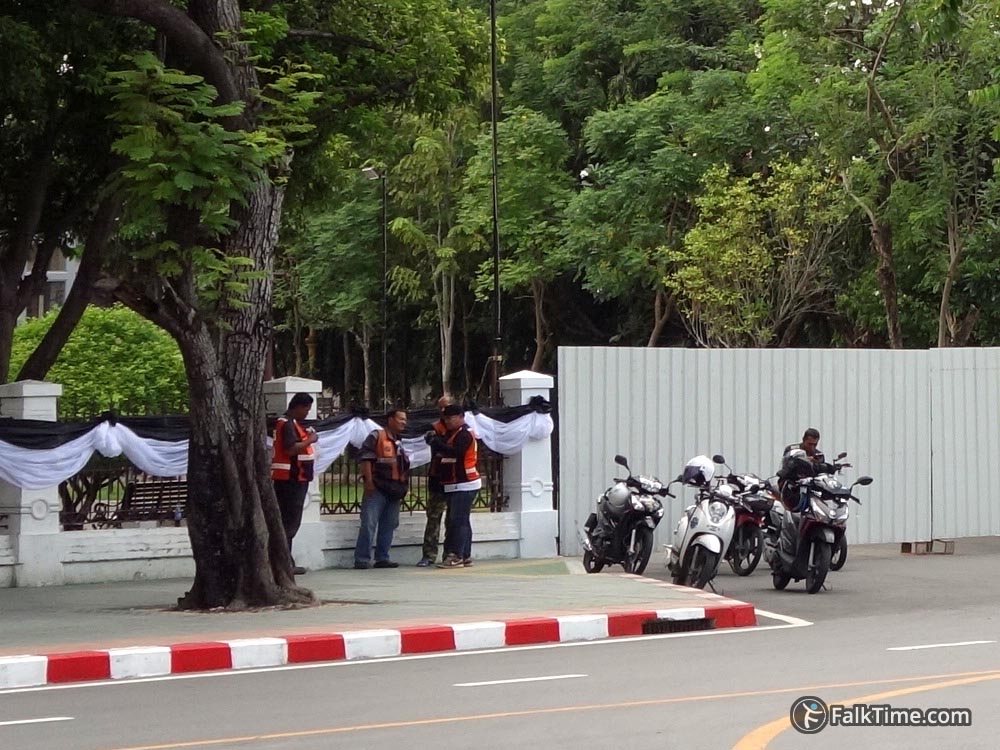
b) Motorcycles or scooters with “attachment”
Drive much slower than previous category. Some even move at a speed of a pedestrian. Usually this type of vehicle can be met in small towns or rural areas.
Like songthaews, none of motorcycle taxis won’t save you from getting wet during rain.
Tuk-tuks
Tuk-tuk drivers seem to be the slyest in Thailand. You will meet tuktuks in Bangkok, Ayutthaya and several other cities. I don’t know which one absent-minded person was the first to write about romance of tuk-tuk ride. I can state that there’s neither romance nor convenience:
- tuk-tuk’s curvy roof reduces visibility,
- when it rains this roof doesn’t save you from getting wet
- and if tuk-tuk got stuck in a traffic jam, you’ll have to breathe with exhaust gas.
While the cost of tuk-tuk ride is higher than the similar ride in air-conditioned taxi with a better view (like in any car).
If tuk-tuk driver offers you a ride (anywhere, at your choice) for just 10 THB (I met it 100s times in Bangkok) – reject his proposal. Yes, you will really pay him only 10 THB, but before bringing you to the destination (even if it’s just 2 km. away), tuktuker will take you to a tour agency (where the staff will begin to offer you hotel rooms or tours), to a tailor (that will insist on ordering a new suit) or somewhere else, God only knows where. Everything is simple: for 1 potential client/customer tuktuker receives money or some gasoline. You will save 50-100 THB, but you will waste up to 2 hours.
Velo-taxi (samlor)
Samlor is Thai name for a bicycle taxi. They are not very common, but you will meet them in small towns. I can’t say, what will be faster: to walk or to hire samlor. On my arrival to Kanchanaburi an old man approached me and offered transportation for a very reasonable price. If I knew that it would be a velo-taxi, I would have refused. But I got it only when he brought us to his vehicle. Well, we = 2 adults with a suitcase and a bag. I just couldn’t say “no” to an old man, who wanted to work that much, especially after I had agreed and all other clients were gone.

Taxi
Bangkok meter taxi is supposed to be worlds best taxi due to polite and tolerant drivers, low cost and air-conditioner that is a must in such a hot country like Thailand. Taxis usually use taximeter for an intra-urban ride, or a fixed price if you need an intercity ride (or if the route seems to be non-profitable for taxi driver).
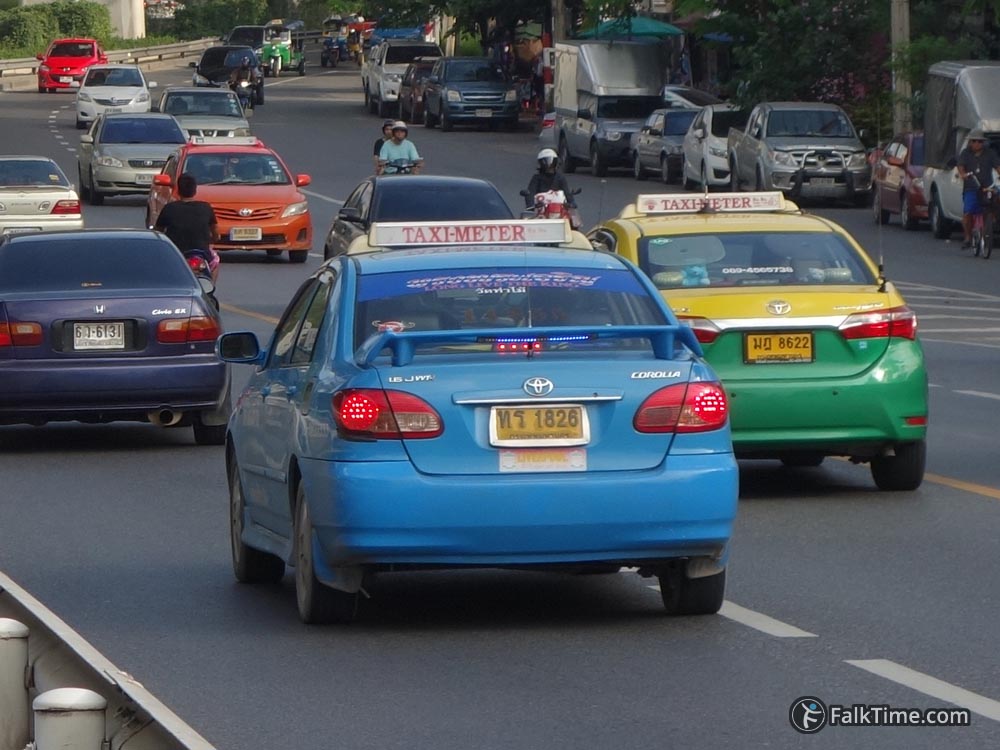
The rate of Bangkok meter taxi
35 THB (start price that includes 1 km) + 2 THB for every 400 m. + 1,5 THB for every minute spent in traffic jam (moving with a speed less than 6 km/h). Aside from this you pay tolls, if using highways, +20 THB if you hire a taxi using telephone and +50 THB if you grab a taxi in airport. All surcharges are NOT included in the amount that shows meter.
If we go in details – the cost of every kilometer becomes 0,5 THB more expensive, if your trip is longer than 12 km. Also it will increase +0,5 THB per kilometer after 20 km. and after 40 km. too. And +1 THB after riding more than 60 km. The last price (for a ride more than 80 km.) is 8,5 THB/km (instead of 5 THB/km that it had cost in the beginning).
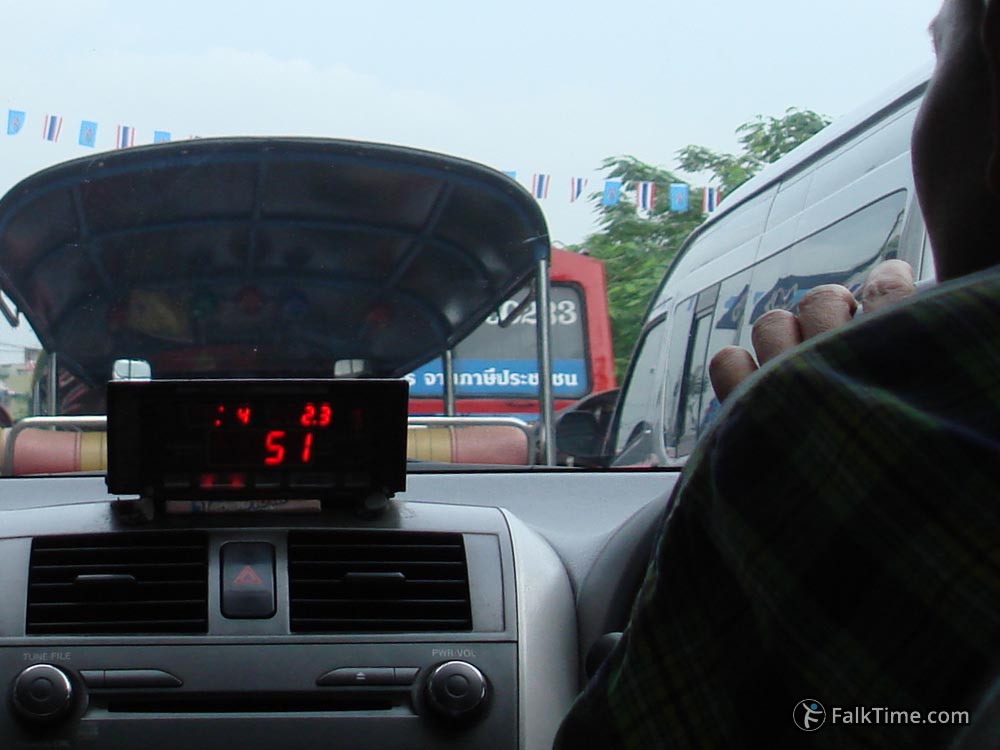
Other information about Thai taxis
Sometimes drivers refuse to take you on board, it may happen when:
- Driver doesn’t know the route.
- The route consists of one big traffic jam.
- The route ends in a place, where driver hardly finds next passenger.
In last 2 cases taxi driver can offer you fixed price. This is a common practice for taxi drivers next to Khaosan road in Bangkok – too many tourists around, why should one give a metered ride, when one can get more profitable passenger? If the driver agrees to use taxi meter – make sure (for your calmness) that he has turned the meter on, when you got into taxi.
Most of taxis are small bright-coloured Toyotas with «TAXI-METER» sign on the roof. To get a bigger taxi (up to limousine), you’d rather ask receptionist of your guesthouse for assistance (he will either offer their own transportation that sometimes can be more expensive, or call any taxi company you wish, using your cell phone, and make an order).
If you see Bangkok taxi in other cities – don’t miss a chance to hire it: driver may agree to take you on a metered ride, if your destination is on his way. My experience at Koh Chang.
There’s an intra-urban taxi service in Pattaya. But still I didn’t use it – it’s a bit more expensive than in Bangkok + it’s easily substituted with public songthaews for 10 THB (as usually I don’t travel with more than 1 person).
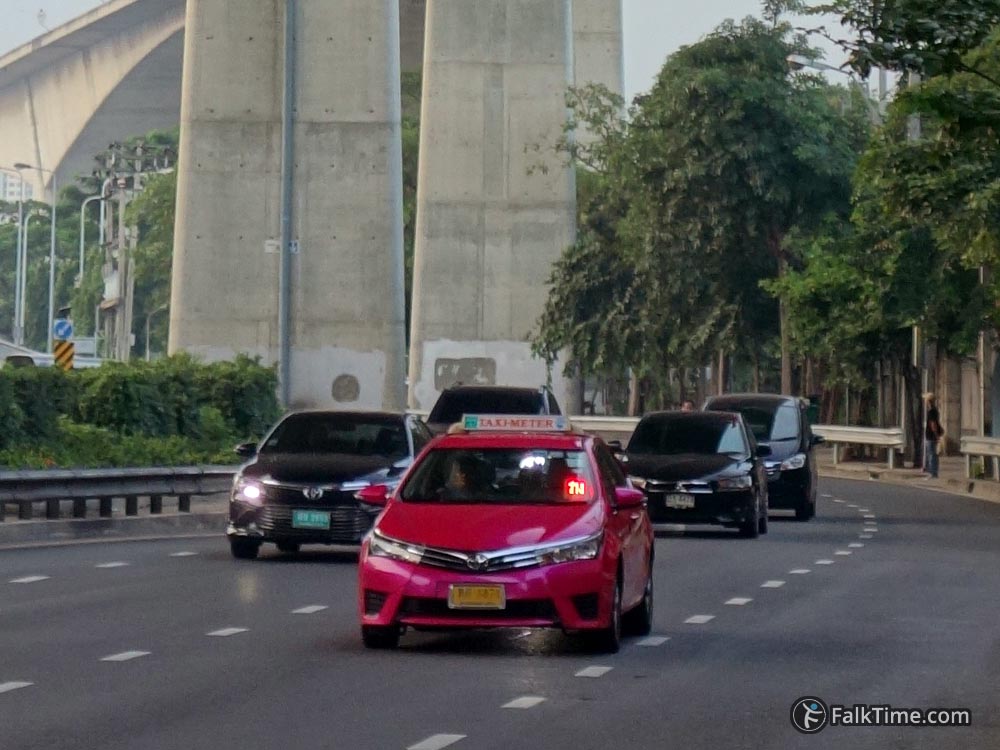
Buses
It’s a hard and big quest with buses in Thailand, while a bus ride is very cheap. Hard – because most of buses are non-air-conditioned and there are huge traffic jams in Bangkok during rush hours. If you still want to use buses in Bangkok, open Google Maps and build a route with use of public transportation – Google Maps works great in Bangkok.
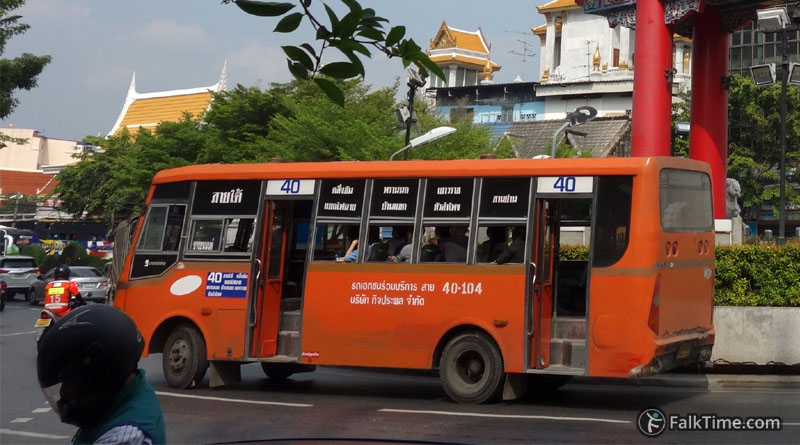
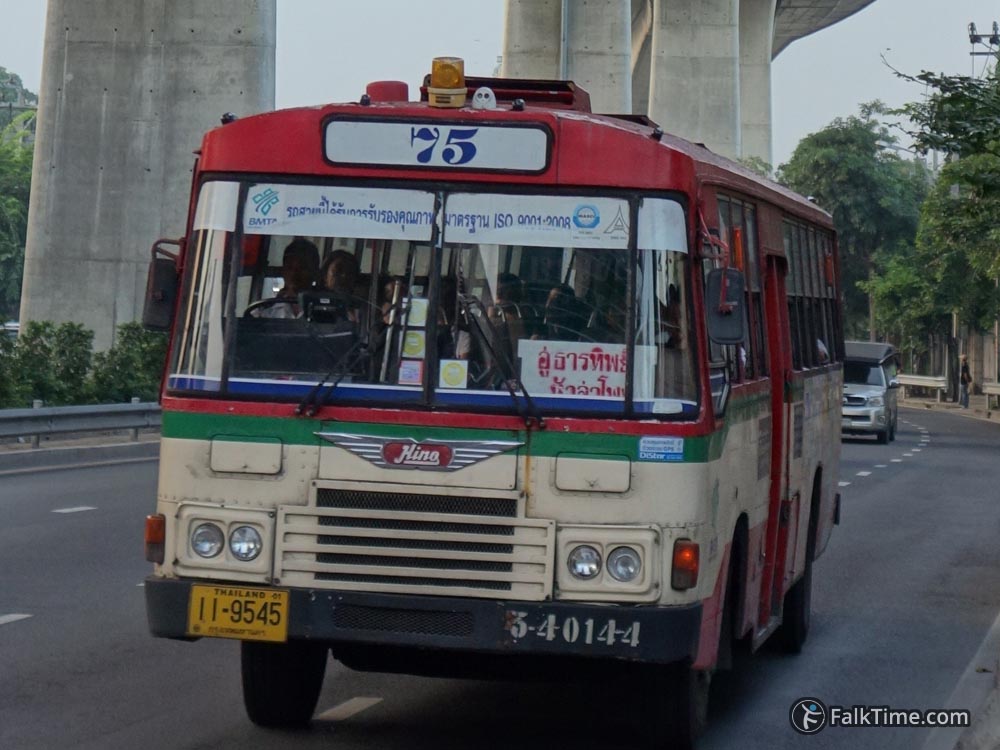
Water transport
In most of Thai settlements water transport is a “ferry” – any type of boat cruising between 2 coasts. Most of boats are quite small. You can pay fixed price and wait until other passengers arrive or you can pay extra money to hire the boat.
Also you can hire a boat to use it as a taxi or to have a sightseeing tour. Water transport is widely used in Bangkok, there are even water buses (a boat that follows a route along river or canal and makes several stops on piers).
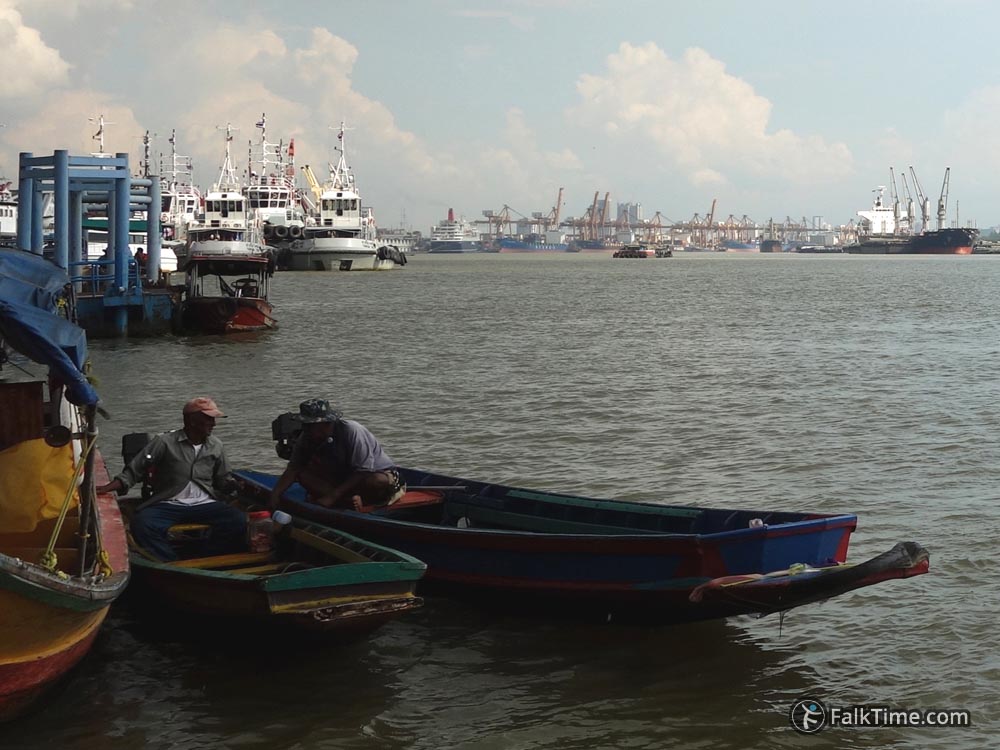
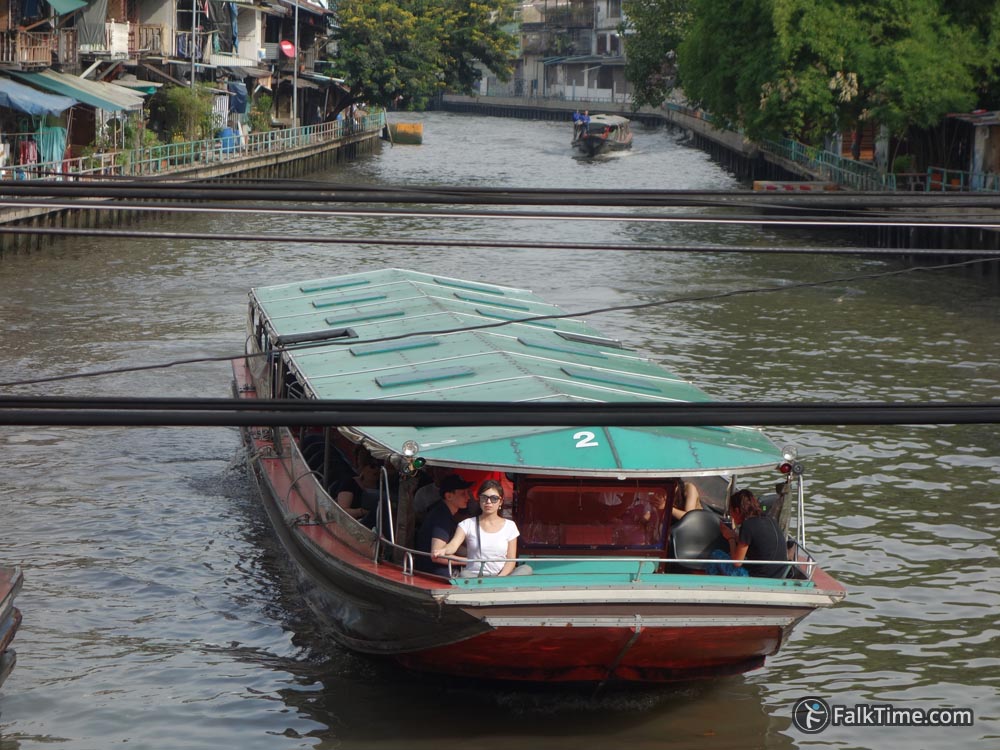
Private vehicles
This is a category for everything you might get, if you have booked any transportation at reception of your guesthouse (f.e. for sightseeing purpose or for a round trip to 1 shop/sight/park etc). It can be uncomfortable songthaew (with lower roof, so you can’t sit straight enough in it) or a good minibus or whatever is possible to put someone for a ride. Expect the unexpected or ask the receptionist how the vehicle will look like, as “taxi” in Thailand doesn’t mean car only. Especially be aware of it in a town or rural area.
